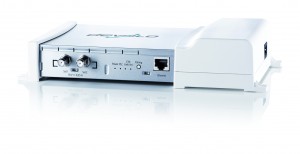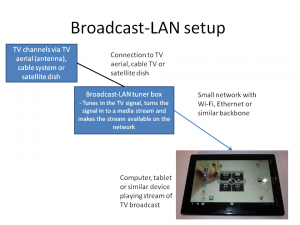Sat-IP makes the single-piece broadcast-LAN satellite dish possible
Articles – From the horse’s mouth
SES-Astra
SelfSat
Self-Sat IP range
Snipe Air, Snipe Dome Air, Snipe Wing Air
My Comments
A Korean company had launched a new direction for satellite antennas where they aren’t a dish with the LNB antenna in front but a multiple-layered plate which masks a horn-based waveguide to the LNB antenna in the back. It is very similar to how a horn-style tweeter on some PA and hi-fi speakers works, allowing for efficient handling of very high frequencies.
This company, SelfSat, has allowed for this to materialise as a highly-compact satellite antenna that can be installed by just about anyone even in situations were the traditional satellite dish can be perceived to be ugly and subject to all sorts or regulations and rigmarole. As well, these antennas also are pitched at cheaper multiple-tenancy housing which isn’t equipped with a SMATV (common satellite dish) setup for satellite-TV reception.
But they took this further by offering a range of single-piece antennas that have integrated SAT-IP broadcast-LAN support with its own Ethernet connection. This allows he SelfSat>IP antennas to each serve up to eight SAT-IP reception devices with content concurrently.
There is also 2 LNB outputs on this satellite antenna so you can connect a multi-tuner PVR sat-box or multiple set-top “display-only” sat-boxes.
SelfSat even took this further with their Snipe Air lineup of mobile SAT-IP broadcast-LAN antennas which have their own 802.11ac Wi-Fi access point to distribute satellite TV to 8 concurrent Wi-Fi-equipped computer devices. I am not sure whether these only function as access points in that they create their own network or whether they can be part of an existing Wi-Fi network, contributing satellite broadcasts to that network.
The best application example that comes to mind for the Snipe Air SAT-IP antennas is the Tour De France where one or more of the “camping-cars” (motorhomes) that line the route of the cycle race use this antenna to pull in any of France Télévision’s coverage signals that the Astra satellite yields, serving one or more iPads or convertible laptops with vision of where the peleton is currently at. This allows for a judgement call about whether to run out to the roadside to see it pass or not.
The advantage that SelfSat pitches about Snipe Air compact satellite antennas is that they can be stored easily in a small car’s boot with room to spare or that, in the case of some models, they have the same roof profile on a caravan, campervan or motorhome as the typical roof-mount RV air conditioner.
What do I see of SelfSat’s SAT-IP efforts? I see them as a way to reduce the fuss associated with deploying the equipment necessary to receive satellite TV service. This could open up paths for many-endpoint mobile applications like the “Tour De France caravan parks” familiar to anyone who watches that cycle race, or the road coaches that offer competitive road transport service across European borders.




